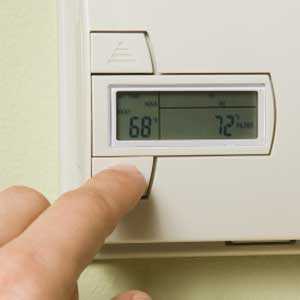How to Maintain Different Room Temperatures in Your House
 In a typical home, heating and cooling demands differ from one room to another. There are rooms such as the living room where the family spends most of the time and therefore must be warm enough. In most homes, achieving regulated temperatures is not easy because of the kind of systems installed. In these homes, it is not unusual to find the store or the laundry room as warm or as cool as the rest of the rooms. For a family that is energy-conscious, having such an obvious loophole as far as energy management is concerned is totally unacceptable.
In a typical home, heating and cooling demands differ from one room to another. There are rooms such as the living room where the family spends most of the time and therefore must be warm enough. In most homes, achieving regulated temperatures is not easy because of the kind of systems installed. In these homes, it is not unusual to find the store or the laundry room as warm or as cool as the rest of the rooms. For a family that is energy-conscious, having such an obvious loophole as far as energy management is concerned is totally unacceptable.
By design, some rooms retain more heat while others have difficulties in keeping heat for a long time. This should not be a problem for a homeowner who uses system zoning to regulate the temperatures of the various rooms in the house.
What is System Zoning?
Simply defined, system zoning involves the use of multiple thermostats wired to a control panel which operates dampers in your ductwork. The thermostats read the temperature of the zone in which they are in charge and then close or open the dampers according to the settings of the thermostat. System zoning is a perfect solution for homes that have inconsistent room temperatures as well as for heating or cooling individual rooms in line with the desired temperature settings. If your guestroom is always empty, all you need to do is to shut the door then close the damper.
System zoning is highly beneficial because it helps you save money on energy bills. According to the United States Department of Energy, system zoning can potentially save homeowners up to 30 percent on home heating and cooling bills. It further estimates that heating and cooling accounts for over 40 percent of a typical household utility costs. For the rooms that are seldom used, system zoning enables you to make significant savings by running temperature controlled air only when necessary.
Installing System Zoning and Programmable Thermostats
In light of the benefits above, you would expect that every homeowner has this system installed. This is not always the case because many homeowners are unwilling or hesitant to make the transition because of the initial cost involved. This is understandable although homeowners should consider other options available. The Inventions and Innovations Program of the Department of Energy came up with a damper system which can be fitted into existing ductwork. This is particularly helpful to those who are not building new homes or replacing old HVAC systems.
This system brings together an electronic controller, air pumping system, and flex damper air control inserts. It does not involve heavy motors so the existing ductwork does not have to be supported or altered. The flex dampers come in square and circular duct models and fill with air so as to block or constrict the airflow within the ductwork. They are also resistant to aging, heat, airborne chemicals, moisture and ozone. In the event they are punctured, many of the holes will not affect its performance. All the technical needs to do to service the dampers, is to gain access through the register.
The setup of the system zoning will be determined by the number of zones your home requires. In a home with two zones which are equal or fairly equal in size, the ductwork of each zone should be capable of handling up to 70 percent of the total cubic feet per minute of air produced by the HVAC system. For a 3-zone system, each zones ductwork must handle up to 50 percent of the total cubic feet per minute of air.
It is therefore possible to regulate your home room temperatures so as to save on energy and make your HVAC system efficient for longer.

Comments
How to Maintain Different Room Temperatures in Your House — No Comments
HTML tags allowed in your comment: <a href="" title=""> <abbr title=""> <acronym title=""> <b> <blockquote cite=""> <cite> <code> <del datetime=""> <em> <i> <q cite=""> <s> <strike> <strong>